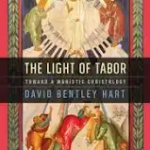Hugh Grady opens his Shakespeare and Impure Aesthetics (6-10) with a brief and illuminating discussion of Kant’s aesthetics of purity. By “pure” here is meant the freedom of aesthetic experience from cognitive reason and teleological judgments, from practical or moral interests. This disinterested experience of art is an encounter with beauty that is not determined by or subordinate to the good or the true. The purity of the experience is in fact the criterion for judging a truly aesthetic experience. It... Read more














